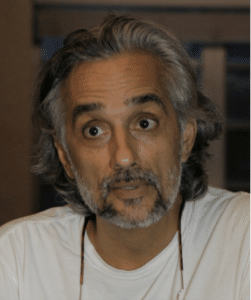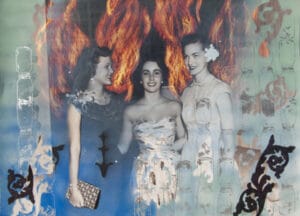Seattle-based Cuban-American studio artist Hugo Moro draws from his childhood experiences in Cuba, his artistic awakening in New York City, and his work as a professor, graphic designer, and art director in Miami, to create unique, eclectic installations, as well as gallery pieces. At Project-106 in Pioneer Square, Hugo currently uses a wide range of media, including mixed media on panels, mixed media on chromogenic-print, found objects on panels, and even “burned chairs” to evoke emotion and create a sense of wonder.


What you will learn:
- What it’s like to live and work in an art-centered neighborhood; how he is able to keep creating despite pandemic-related restrictions; the hustle required to promote and sell artwork, as well as make connections with galleries. [0:00-14:16]
- What it was like immigrating from Cuba to New York when he was 12; how the New York art scene influenced his career trajectory; what early artistic influences shaped his artistic vision. [14:16-20:46]
- How his experience at the Pratt Institute and Fashion Institute of Technology helped him understand what he didn’t want to do just as much as what he wanted to do artistically; what it was like crossing paths with Andy Warhol in New York City; how his experience feeling like an outsider as an openly gay Cuban immigrant shaped his artistic choices aesthetically. [20:46-27:34]
- How collective trauma can influence political views and what process Hugo followed to forge his own path as an artist. [27:34-38:16]
- The advice Hugo would give to young people wishing to pursue a career in art. [38:16-44:02]
- The personal joys and challenges he has faced, and what upcoming projects he’s looking forward to in late 2020 and throughout 2021. [44:02-52:10]
Resources Related Hugo Moro:
- Hugo Moro’s: Website, Facebook, LinkedIn
- Transcript of Interview with Hugo Moro
Check This Out:
From Sondheim to City On A Hill, with Jere Shea
Bass Guitarist Mai Leisz on Jazz, Melodic Playing with Rock Legends
RECAP Mai Leisz, Jim Haven, and Preview of Sundance Interviews
Light, Space and Interactive Technologies with Dylan Neuwirth
